The black cups of the Jianyang kiln
The art of ceramics has ancient root in China. It culminated in the Tang dynasty (618-906) with the invention of porcelain. Over the centuries, different sites developed distinctive styles and firing technics; some of them gained wide popular consent and a few even became official centres for imperial production.
But today I don’t want to write about Jingdezhen, Dehua or other famous kilns. I rather intend to present the superior wares of Jianyang, a small ceramic centre in the northern part of Fujian.
I recently discovered the blackware of Jianyang in an online pictographic review of Chinese teaware. It was, however, just few days ago that I decided to dedicate a blog to it, when I had the opportunity to hold an original Jianyang tea cup in my hands.
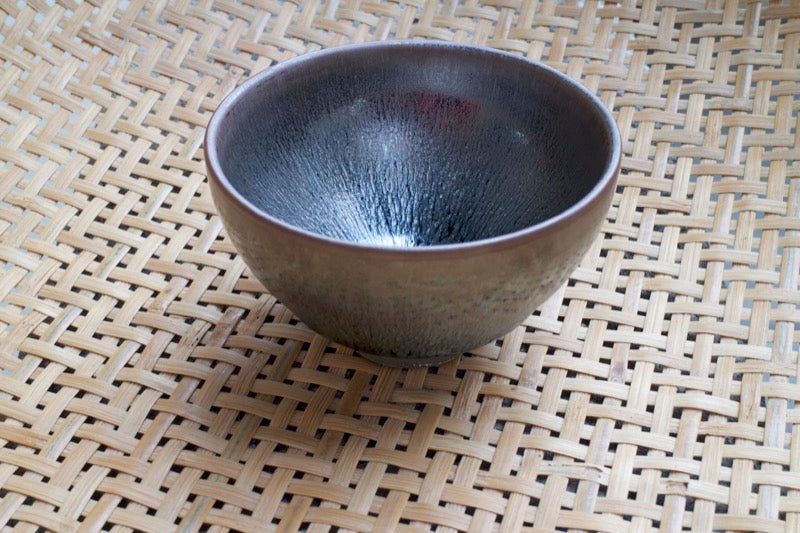
An original Jianyang tea cup
Usually, I am not a fan of dark cups for I like to appreciate the hue of the tea I am drinking. But the uniqueness of the style and the remarkable artistic value captured my attention and so I started thinking: “How well a thick shu pu, and aged white tea or a malty black tea would fit into this cup!”
Others, however, prefer the Jianyang cups for green tea. They leave some leaves in the large cups to appreciate the contrast between the tiny green leaves and the dark background. This is similar to the original use: In China, at the time the cups were conceived, tea was grounded to powder, mixed with water and whipped into a white foamy liquid which, as the green leaves, contrasted against the black glaze.
Jianyang kiln and its blackware became famous in the Song dynasty (960–1279). It is made of a dark and coarse purple-brown paste, covered by a thick patterned glaze. The glaze covers all the interior of the cup and literally flows over the rim on the outside, stopping short on the bottom of the cup and thus leaving its base unglazed and the purple-brown paste visible.

The glaze stops short, leaving the bottom of the cup unglazed and the purple-brown paste visible.
The finishing is shiny and glossy; difficult to photograph because it reflects the objects next to it.
The glaze is said to resemble the fur of a hare, with thin black “hairs” contrasting with the brown background. The rim is hair-free though; brownish and smooth.
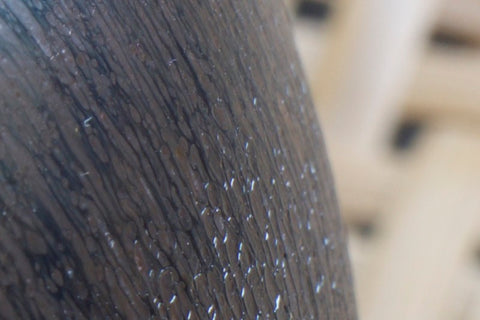
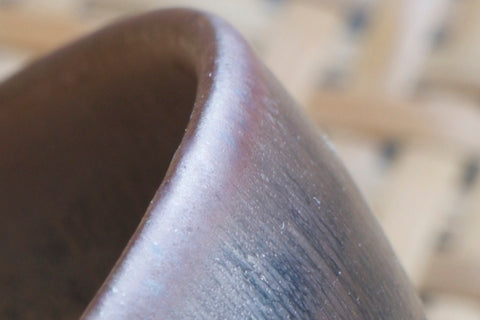
Left: Hair-like black pattern on a brown background.
Right: The rim of the cup is “hair”-free, brownish and smooth.
I came across two cups with slightly different finishing; they were made by the same artist (see pictures below). In the left one the glaze is washed out and the “hairs” are less pronounced than the other. The right one is showier; the black “hairs” stands out the brighter background and form a clear network of black veins.
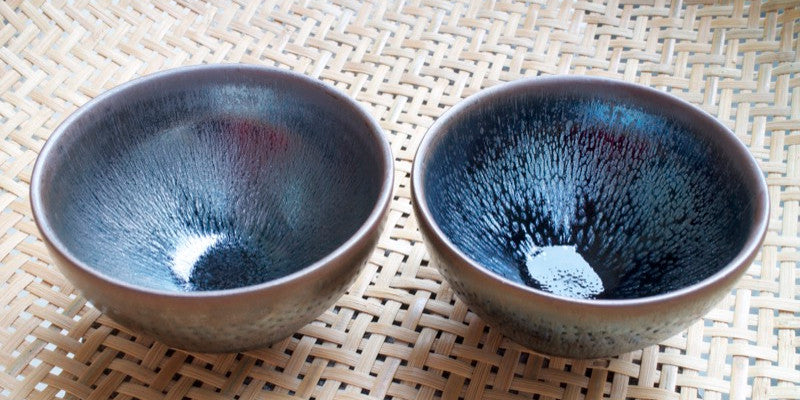


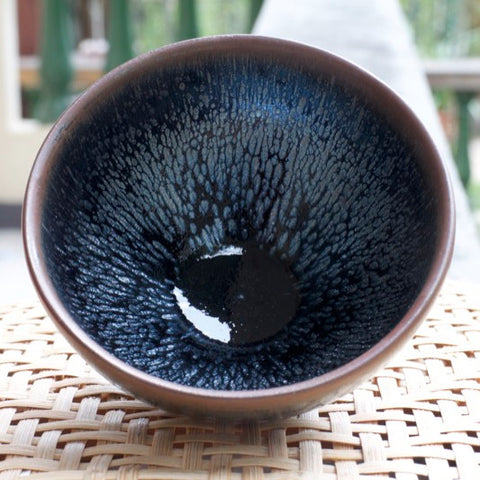
Cups with different finish made by the same artist. The right cup has more and thicker black “hairs.”
Upon kind request, the artist agreed in producing a small batch of cups for us, custom made for nannuoshan! I asked him to glaze half like the left-one and the other half like the right-one in the pictures above.
I look forward drinking a cup of dense tea in this special black cup!

The jianyang cups before firing in the kiln.
NOTE
After Fujian, back in Shanghai, I noted Jianyang cups in the windows of some tea shops. The retail price started from double the price I paid just few days before, with some cups being over twenty times more expensive! A new status symbol for the Chinese upper class caused to prices to raise uncontrolled, as already experienced for Pu’er and Tieguanyin? Probable.
Having commissioned the cups directly to an artist in Jianyang, we can not only guaranty their authenticity but also sell them for a price that would be competitive even on the Chinese market!
Written by Gabriele





